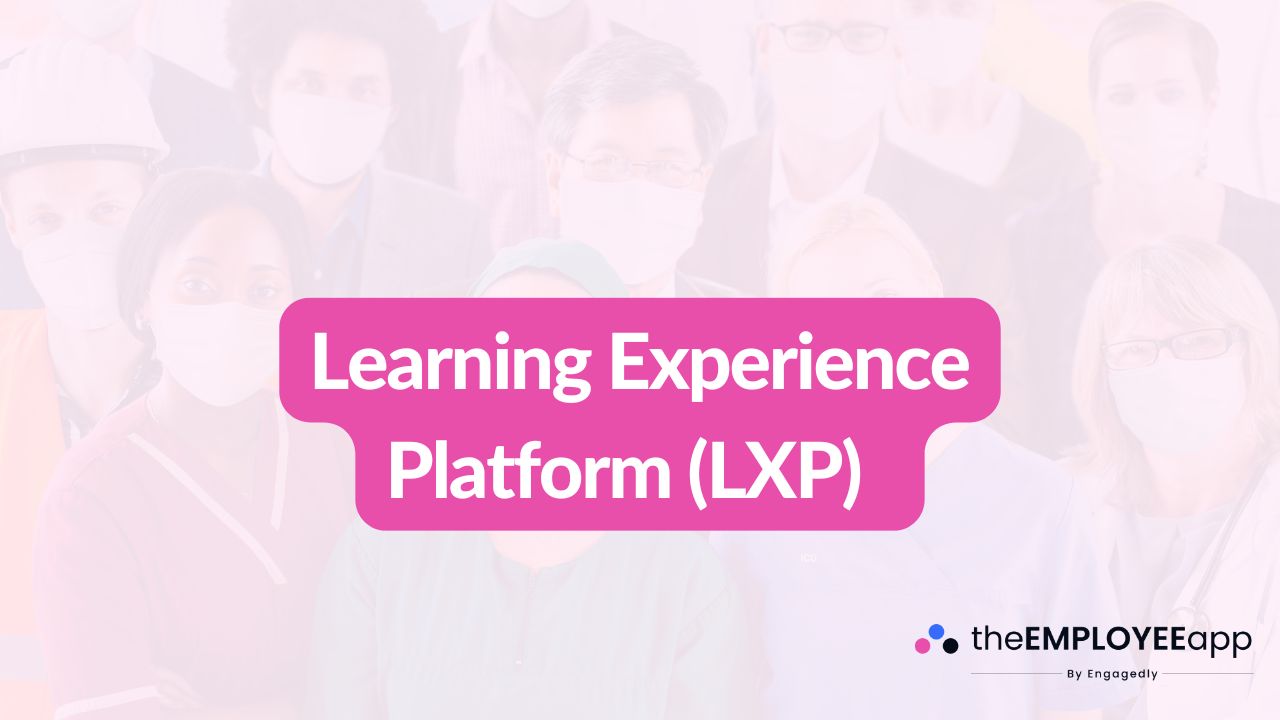
Learning Experience Platform (LXP)
A Learning Experience Platform (LXP) is a modern digital learning solution designed to deliver personalized, engaging, and employee-driven learning experiences. Unlike traditional Learning Management Systems (LMS), which are often compliance-focused and top-down in nature, LXPs empower learners to take control of their own development. They use artificial intelligence, data, and social learning tools to recommend content, encourage collaboration, and align learning opportunities with both organizational goals and individual career paths.
What Makes an LXP Different from an LMS
While both platforms are used for training and development, they serve different purposes. An LMS is primarily used to deliver structured training programs, such as compliance courses, onboarding modules, and mandatory certifications. It is often organization-centric and tracks completion for reporting purposes.
An LXP, on the other hand, is learner-centric. It curates a wide range of content from different sources—internal libraries, external providers, and user-generated contributions—and delivers them in a way that feels more like consumer platforms employees use daily, such as Netflix or Spotify. Instead of simply assigning courses, LXPs recommend learning paths, articles, videos, podcasts, and peer discussions that match the learner’s interests, skills, and career aspirations.
Key Features of a Learning Experience Platform
Personalized Learning Paths: LXPs use AI and analytics to recommend tailored learning journeys based on employee roles, goals, and past activity.
Content Curation and Aggregation: They integrate content from multiple providers, including MOOCs, e-books, industry resources, and internal knowledge libraries.
Social and Collaborative Learning: LXPs encourage peer-to-peer learning through discussions, forums, and knowledge sharing.
Mobile-First Access: Designed for flexibility, LXPs enable learning anytime, anywhere, and on any device.
Analytics and Insights: Provide detailed data on employee engagement, skill development, and performance outcomes.
Integration with Other Systems: LXPs often connect seamlessly with HR platforms, talent management systems, and performance tools.
Benefits of Using an LXP in the Workplace
Implementing a Learning Experience Platform offers several advantages to both organizations and employees:
Enhanced Engagement: Employees are more motivated to learn when content is relevant, personalized, and accessible.
Continuous Learning Culture: LXPs shift learning from one-time training events to ongoing skill development.
Skill Development for the Future: By aligning learning content with emerging skills, LXPs help prepare employees for future roles.
Employee Retention and Growth: Organizations that invest in employee development through modern platforms are more likely to retain top talent.
Flexibility and Autonomy: Employees can choose learning formats and topics that best suit their preferences and schedules.
Knowledge Sharing: Peer-driven contributions foster collaboration and create a stronger learning community within the organization.
Why LXPs Are Growing in Popularity
The rise of remote work, digital transformation, and the need for continuous upskilling have made LXPs increasingly valuable. Traditional training models can feel rigid and outdated, whereas LXPs provide flexibility and agility. Organizations today must respond quickly to changing industry needs, and an LXP allows them to provide learning opportunities that evolve just as fast.
Furthermore, employees now expect workplace tools to be as intuitive and engaging as the apps they use in their personal lives. LXPs meet this expectation by offering searchability, recommendation engines, and user-friendly interfaces that feel familiar.
Challenges in Implementing an LXP
While LXPs offer many benefits, organizations may face challenges in rolling them out effectively:
Content Overload: Too many options can overwhelm learners without clear guidance.
Adoption Resistance: Some employees may prefer structured training over self-directed learning.
Integration Issues: Ensuring smooth connections with existing HR systems and LMS platforms can require effort.
Measuring ROI: Tracking the business impact of an LXP beyond completion rates requires robust analytics.
To overcome these challenges, organizations should provide a balance between curated learning paths and self-directed exploration, while also offering support and communication to drive adoption.
The Future of Learning Experience Platforms
As workplace learning continues to evolve, LXPs are expected to integrate more advanced technologies. Artificial intelligence will become even more refined in delivering personalized recommendations, while gamification, virtual reality, and immersive simulations will enhance engagement. LXPs will also play a bigger role in workforce planning by aligning learning directly with skill gaps and future organizational needs.
Conclusion
A Learning Experience Platform (LXP) is more than just a tool—it’s a strategy to create a culture of continuous learning. By shifting the focus from mandatory training to employee-driven growth, LXPs empower individuals while also helping organizations stay competitive. As the demand for agile learning solutions grows, LXPs will become an essential part of the modern workplace learning ecosystem.